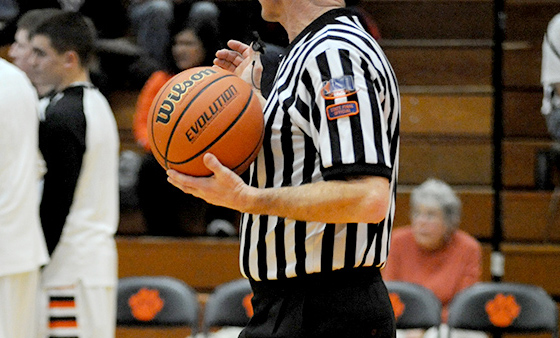Which sports cause the most injuries to high school athletes?
The headlines might have everyone convinced that football is responsible for the most injuries to high school athletes, but data suggests that’s not the case.

HealthGrove.com recently compiled statistics from the Consumer Product Safety Commission showing which sports are responsible for the most trips to the emergency room for athletes ages 13 to 17. Football cracks the top five, but it doesn’t lead the way. That honor goes to basketball.
The list provides some perspective, but it doesn’t take all factors into consideration. HealthGrove notes that the data doesn’t show the number of injuries per player, so sports with greater participation will naturally climb higher up the list. Discounting injuries that do not send athletes to the emergency room also creates room for scrutiny.Here is the list, along with the average number of injuries each year between 2002-14.
20. Bowling: An average of 764 injuries each year.
19. Rugby: 1,214.
18. Field hockey: 1,825.
17. Tennis: 1,915.
16. Skiing: 4,752.
15. Ice skating: 4,999.
14. Horseback riding: 5,581.
13. Lacrosse: 5,830.
12. Track and field: 8,194.
11. Weight lifting: 8,921.
10. Snowboarding: 9,608.
9. Ice hockey: 12,336.
8. Volleyball: 14,304.
7. Softball: 18,119.
6. Wrestling/boxing/martial arts: 18,174.
5. Gymnastics/cheerleading/dance: 22,671.
4. Baseball: 27,208.
3. Soccer: 45,475.
2. Football: 118,886.
1. Basketball: 119,589.
The breakdown also includes the most common body part injured in each sport — for example, finger in football and ankle in basketball. Click here to read the complete report.
40 thoughts on “Which sports cause the most injuries to high school athletes?”
Leave a Reply
You must be logged in to post a comment.






This is interesting data. But I am curious about the ranking of sports and injuries based on proportional facts . It’s obvious that basketball and football will show most injuries because they are also most popular .
I agree. This should be number of injuries per thousand athletes …
I agree with the number of players ,Yet positions seem to make more sense. There a schools playing football with 25,maybe less players, while others may have more than 100 with the majority never on the field. The constant is there are always 11 players, on the football field, 5 players on the basketball court, etc.
Then simply factor in the number of games an you can create an almost level playing field to evaluate injuries. The only factor missing, also the most critical is the severity.
But why take the time to capture and analyze the data if we aren’t going to use it. Sports injuries can be reduced, I have little doubt that they can and will. But how long will it take, and what/who will be the driving force.
yup thatis true
There are now far more soccer players than football or basketball players.
With 1,036,842 participants, 11-player football remains the No. 1 participatory sport for boys in high school by a large margin. Outdoor track and field is No. 2 with 600,097 participants, followed by basketball (551,373), baseball (487,097), soccer (456,362), cross country (270,095), wrestling (245,564), tennis (158,151), golf (144,024) and swimming/diving (138,935).
they need to update this soon….
that is true but football is the most popular sport and it doesn’t have the most injuries on the list (I’m British to call ⚽️ football instead of soccer)
how do you get an injury bowling
true
Shoulder injury, wrist injury. I’ve seen quite a few wrist injuries.
tried to look it up did not say
your finger gets stuck in the bowling ball 😁
Elbow Tendonitis
Wrist Tendonitis
Anular ligament sprain
Lateral Epicondylitis
Shoulder Tendonitis
Rotator Cuff Tear
Shoulder Instability
Knee Medial Collateral Ligament (MCL)
Knee Lateral Collateral Ligament (LCL)
Anterior Cruciate Ligament (ACL)
Posterior Cruciate Ligament (PCL)
Knee Meniscus Tear
Patellar Femoral Syndrome (PFPS)
Illiotibial Band Syndrome (ITB)
Hip Bursitis
Piriformis Syndrome
Sciatic Nerve Irritation
Arthritis
Low Back Pain
Herniated Disc
Lumbar Strain and Sprain
Spondylolysis
Elbow Tendonitis
Wrist Tendonitis
Anular ligament sprain
Lateral Epicondylitis
Shoulder Tendonitis
Rotator Cuff Tear
Shoulder Instability
Knee Medial Collateral Ligament (MCL)
Knee Lateral Collateral Ligament (LCL)
Anterior Cruciate Ligament (ACL)
Posterior Cruciate Ligament (PCL)
Knee Meniscus Tear
Patellar Femoral Syndrome (PFPS)
Illiotibial Band Syndrome (ITB)
Hip Bursitis
Piriformis Syndrome
Sciatic Nerve Irritation
Arthritis
Low Back Pain
Herniated Disc
Lumbar Strain and Sprain
Spondylolysis
When you’re the bowling ball
The report is misleading, because the number of injuries does not reflect the severity of the injuries. I’m pretty sure the Football injuries are more debilitating than minor ankle injuries sustained playing basketball.
your right.
I’d be curious to see the percentage itself not just the raw number. There are less bowlers and tennis players than there are football and basketball players so obviously there would be more injuries in those sports than others.
What about SWIMMING?!?! Do you know how many injuries swimming gives you?!
In skateboarding there are a various amount of injuries. Why isn’t it in the list?
This article is about high school sports. Few if any high schools have a skateboarding team
Swimming is absolutely a sport and I’m confused why it isn’t on this list of sports. A lot of high schools have a swim team.
Can you tell me where shooting sports rank in this list? Skeet,Trap and Riflry
These are club sports, Usually involved in ROTC. Not school organized sports
you forgot cheer
No it’s with gymnastics
It’s number 5
how come you people don’t play cricket is it to dangerous????
Ya Aussies
This was a great article and really appreciated. That being said, having further breakdown would help with training, preventive maintenance, practices, and trainers etc. – just my personal observation.
MARTIAL ARTS SHOULD BE #1 ON THE LIST
TOO MANY PEOPLE GET HURT BY THIS
WHY DID THEY EVEN MAKE THIS A SPORT IN THE FIRST PLACE
Because people like it! 🙂
Well that’s a big problem
How do you get hurt in tennis
wrist injurys
netball?? rugby??
I feel like some of these are hard to compare, one tiny sprained ankle in basketball (not that that’s all that can happen, I know you can get severe injurys from all sports) can’t always compare to the broken collarbone or rotated pelvic bone that gymnasts undergo daily
True
If more people play soccer than any sport in the world the truth has to be that more injuries occur playing soccer no matter what some report says. There is no way they could gather accurate info. So to come out with any report is just biased nonsense.